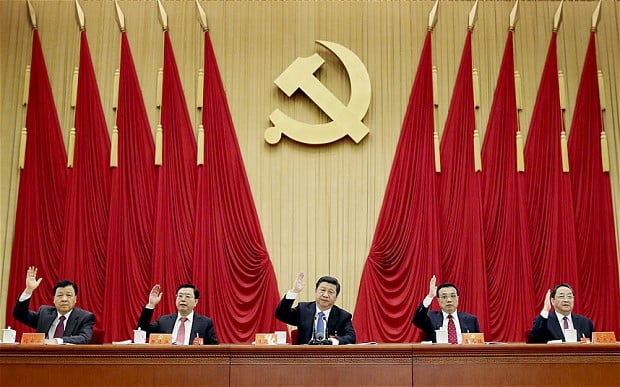19.02.2021
What China’s Third Plenum Means for Offshore Manufacturing


Envisioning a new era for China’s economy, in November 2013 top Chinese leaders held the 3rd Plenary Session of the 18th Committee of the Communist Party of China (the Third Plenum), a four-day meeting to plan China’s future of social and economic reform. The reforms outline sweeping changes that China’s leadership expects to make in the coming decades.
On November 15, 2013, a document (“the Third Plenum Communique”) was released outlining the Plenum’s discussion of major reform pledges. They are: a new role for government and market-driven resource allocation; SOE reform; fiscal reform; integrated rural urban development; democratic consultation; judiciary reform; a new State Security Committee; environmental protection; and a new small leading group to coordinate reforms.
Though many of the specific reforms have been dismissed as vague or purely rhetorical, the Third Plenum reforms, targeted for 2020, ultimately point toward China’s push for developed world status, most notably through economic liberalization. This can have resounding effects on an already suffering Chinese manufacturing sector. While each of the proposed reforms can indirectly affect the manufacturing sector in myriad ways, four reforms in particular will directly affect the future of foreign manufacturing in China:
- Market-driven resource allocation
- Changes in State Owned Enterprise (SOE) policy
- Rural land rights reform
- Environmental regulation reform
Market-Driven Resource Allocation
Market-driven resource allocation will be a decisive factor in China’s shift away from its obsolete growth model of high-volume, low-margin manufacturing towards a higher-cost, quality-driven model. To reduce the excess capacity the Chinese manufacturing sector has accumulated in recent years, the government plans to loosen the subsidization and interference once effective in boosting their global competition. Instead, the government is prepared to accommodate higher wages and an overall rising cost structure. “It has become obvious…that the Chinese economy, one heavily based on manufacturing industry, is going to change at last,” the People’s Daily reported. “The anticipation is that the new structure will focus more on the service industry."
State Owned Enterprise (SOE) Reform
While environmental regulations could become stricter, China’s State Owned Enterprise (SOE) interference will ease. In tandem with their predicted model of market-driven resource allocation, SOEs will receive less support from the government, creating an even playing field for foreign competition and incorporating the Chinese economy further into open global markets. As a result, prices of fuels, electricity, natural gas, water and other major natural resources will not be artificially determined and are predicted to rise. What’s more, opening up to the private sector will attract more domestic consumer- and service-based investments targeting middle-class consumption and drawing skilled labor away from manufacturing.
Environmental Protection
Besides having stalled economically, China’s high-output growth model has been regarded as environmentally unsustainable, providing further incentive to transition toward a service-driven economy and tighter environmental regulations. Offshore manufacturers should anticipate increased factory overhead and related hidden costs, as well as policies similar to RoHS and China’s Order No. 39 (China RoHS).
Land Ownership Reform
Similarly, the Third Plenum’s land ownership reform proposes a government retreat from real estate pricing and low-cost acquisitions. Rural landowners will be able to sell their land directly to the market. Similar to the other deregulative efforts, this subjects real estate prices to the laws of supply and demand. As property values have already risen in China, analysts expect higher landowner profits from increased windfall values. In short, useable land will be more expensive, and the Chinese standard of living will increase. Policy makers anticipate that this reform—as well as their social welfare reform (hukou)—will speed up urbanization and a consumer-driven economy.
Conclusion
Chinese manufacturing labor rates are already rising 15% or more annually and China's prices are now within 5% of U.S. prices (according to Boston Consulting Group). Facing an ever-growing middle class (10.2% increase in per-capita income since 2008) and stalling economic growth (China’s PMI is at 50.1, an eight-month low) the Third Plenum reforms are yet another indicator that China's days of being the world's low-cost manufacturing center are officially behind them.
However, other Asian developing countries—Thailand and Vietnam—are stepping up to the plate for low-wage manufacturing. Their economic climates and ripeness for profitable FDI look very much like that of China in the '90s and early ‘00s. One factor preventing these countries from replicating the China model is their size. They don’t have the human resources for sustained and widespread offshore opportunities. If low-cost manufacturing moves from China to smaller Asian countries, competition for pieces of a smaller low-wage pie will drive up costs, and firms will end up paying more for low-skilled manufacturing.
Note: What is a Chinese Plenum?
A Plenum is a meeting of the Communist Party’s Central Committee. This Central Committee has 205 full members and 167 alternate members, chosen at the First Plenum of the 18th Party Congress in November 2012. Each Party Congress lasts for 5 years, and with the exception of the first year there is usually one Plenum held per year. The Politburo, comprised of 25 members, meets more regularly, and the Standing Committee, made up of 7 members, meets even more frequently. Xi Jinping is the General Secretary of the Party and also holds the top posts in the state (President) and military (Chairman of the Central Military Commission).
Third Plenums are seen as important because the First Plenum introduces the new leadership, the Second Plenum tends to be personnel and Party construction focused, while the third one is usually seen as the first plenary session at which the new leadership has basically consolidated power and can introduce a broader economic and political blueprint. (From Business Insider)
This post originally appeared on the DigiSource Blog


